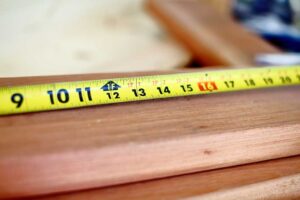Have you ever come across measurements like 5′ 10″ or 12′ × 8′, and wondered what those little symbols mean? Whether you’re tackling a DIY project, shopping for furniture, or reviewing architectural plans, understanding how to read and use feet and inches correctly is essential.
The standard way to write feet is with the abbreviation “ft”, according to guidelines like those from the IEEE. However, in everyday use, feet are often shown with a single mark (′)—kind of like an apostrophe and inches with a double mark (″) that looks like quotation marks. So, instead of writing 2 feet 4 inches, you might see it written as 2′ 4″.
This guide breaks down everything you need to know about symbols for feet and inches Explained including their meanings, usage, historical context, real-world examples, and how to avoid common measurement errors. Let’s clear up the confusion so you can confidently measure, read, and communicate in feet and inches like a pro.
What Do the Symbols ′ and ″ Represent?

The Foot Symbol: ′
The single prime symbol (′) is used to denote feet. It’s typically found after a number to signify how many feet are being measured. For example:
- 6′ = 6 feet
- 5′ 10″ = 5 feet and 10 inches
This symbol is not the same as an apostrophe (’), though they look similar. The correct character is the prime symbol, which is found in most word processors and can be inserted via special character menus.
The Inch Symbol: ″
The double prime symbol (″) represents inches. It comes after a number to signify inches, much like quotation marks but technically different characters. For example:
- 12″ = 12 inches
- 4′ 6″ = 4 feet and 6 inches
Quick Tip:
| Measurement | Symbol | Example |
|---|---|---|
| Feet | ′ | 5′ |
| Inches | ″ | 8″ |
| Feet + Inches | ′ ″ | 5′ 8″ |
History of the Symbols: Why Prime Marks?
The use of prime (′) and double prime (″) symbols dates back to early mathematical and scientific notation. In the 17th century, these symbols were adopted for denoting minutes and seconds in time and arc, and later extended to represent feet and inches due to their clear visual distinction and simplicity.
The usage of primes in measurement systems became standardized over time and is still widely used in English-speaking countries like the United States, which predominantly uses the imperial system.
Why It Matters: Common Mistakes and Misunderstandings
Misinterpreting these symbols can lead to serious issues, especially in fields like construction, design, and manufacturing. Here are some of the most common mistakes:
1. Using Apostrophes or Quotation Marks Instead of Prime Symbols
- Incorrect: 6’ 4”
- Correct: 6′ 4″
Most fonts won’t distinguish the difference, but in formal documents, using the right symbols enhances clarity.
2. Mixing Up Feet and Inches
-
Mistaking 6″ as 6 feet instead of 6 inches can cause significant discrepancies.
3. Using Decimal Notation Improperly
-
5.5 feet is not 5′ 5″ — it’s actually 5′ 6″ since 0.5 feet = 6 inches.
Conversion Tip:
| Feet (Decimal) | Inches |
|---|---|
| 0.25 ft | 3″ |
| 0.5 ft | 6″ |
| 0.75 ft | 9″ |
How to Type Feet and Inches Symbols on Devices
On Windows:
- Feet (′): Alt + 8242
- Inches (″): Alt + 8243
On Mac:
- Feet (′): Option + Shift + E
- Inches (″): Option + Shift + G
On HTML:
- Feet:
′→ ′ - Inches:
″→ ″
When and Where You’ll See Feet and Inches Symbols
1. Construction and Architecture
- Blueprints and building plans almost exclusively use feet and inches. Example: A room might be listed as 12′ × 10′.
2. Clothing and Body Measurements
Height is commonly recorded in this format:
- 5′ 9″ tall = 5 feet 9 inches tall.
3. TV and Monitor Sizes
Though listed in inches, the inch symbol is used frequently:
-
55″ TV
4. Sports
Events like high jump or pole vault use feet and inches:
-
7′ 5″ is a common benchmark for elite athletes.
Tips for Accurately Reading and Writing Measurements
- Always include the symbols when the unit isn’t obvious from context.
- Avoid using quotation marks or apostrophes in formal settings.
- Double-check conversions if moving between decimal feet and feet/inches.
- Use online conversion tools or calculators if you’re unsure.
Real-World Examples for Better Understanding
Example 1: Door Frame Measurement
- A door labeled 6′ 8″ is 6 feet 8 inches tall.
- Total inches = (6 × 12) + 8 = 80 inches
Example 2: DIY Furniture Project
- A plank marked 4′ long is 48 inches.
- If you cut it in half, you’ll have two 2′ (24″) pieces.
Example 3: Height Conversion
-
5′ 11″ = (5 × 12) + 11 = 71 inches
To convert back:
- 71 ÷ 12 = 5.916 → 5 feet and 0.916 feet
- 0.916 × 12 = 11 inches → 5′ 11″
Related Symbols and Units to Be Aware Of
- ′ – Feet
- ″ – Inches
- cm – Centimeters (metric)
- m – Meters (metric)
- in – Sometimes used instead of ″ in text (e.g., 10 in = 10 inches)
If you’re working with international teams or documentation, be mindful of whether metric or imperial units are expected.
Recommended Visual Aids
To enhance this article, you could include:
- A measurement chart converting feet/inches to centimeters.
- A comparison graphic of different common objects (e.g., height of a door, size of a TV).
- A keyboard shortcut infographic for inserting ′ and ″ symbols.
- (Include SEO-friendly alt text such as: “Conversion chart of feet and inches to centimeters.”)
Conclusion
Understanding and properly using the symbols for feet (′) and inches (″) is a small detail that makes a big difference. Whether you’re writing a formal report, designing a space, or simply stating your height, clear and correct measurement notation helps avoid confusion and ensures precision.
Take a moment to double-check your measurements, use the correct symbols, and be consistent across all your documentation. It’s one of those foundational skills that can save time, money, and a whole lot of headaches down the line.

